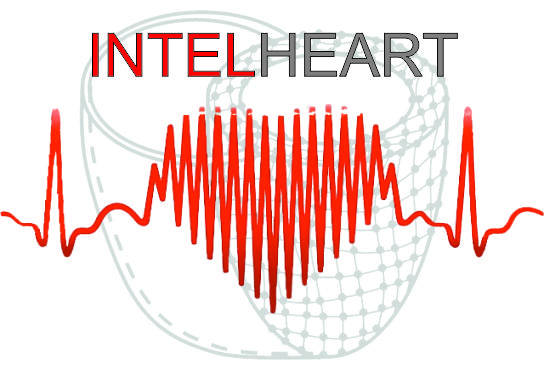- Retrospectively collect and review -specific clinical data from 1,200 patients obtained over the previous 5 years from investigations conducted at the time of diagnosis of HF.
- Perform prospective study on 1,200 patients with suspected HF in primary and secondary care using existing technologies and novel, already developed recent technologies.
- Assess used acceptance of the INTELHEART tools in primary and secondary care.
The main objective of WP2 is to develop AI tools that will perform risk stratification of patients and early diagnostics of HF.
- Establish a joint patient-specific database (digital patient library) for all available patient modalities (retrospective and prospective study data i.e. clinical examinations, medical history, laboratory data, medication use, imaging, ECG, echocardiogram, bioinformatics), which are the outcomes of WP1 and imported into the cloud platform developed in WP5.
- Perform transformation and fusion of data from heterogeneous sources into a representation that is required for implementing machine learning/data mining models.
- Augment the database with artificially generated data of virtual patients to assist in risk stratification and diagnostic simulations.
- Using machine-learning algorithms develop and implement into INTELHEART a risk stratification and early HF diagnostic tool (i.e. DSS) based on retrospective and prospective databases.
Evaluate developed machine learning models and DSS for accuracy and reliability and validate them with the clinical experts.
The aim of WP3 is to design, develop and evaluate the diagnostic performance of a novel high-risk / high-gain, breakthrough, mobile app VoiceHeart for early and accurate diagnosis of HF including psychological resilience and emotional disturbance tests. The VoiceHeart will provide user-friendly guidance for practitioners in primary and secondary care.
- Identification of technical/functional requirements and critical aspects for the development of the innovative tool capable of early and accurate detection of HF
- Design medical mobile app which integrates an AI based algorithms to diagnose HF
- Development of the real-time AI voice biomarker functions and software procedures to support new diagnosis of HF
- Development of the AI based app for filled tests and assessment of psychological resilience and emotional disturbance
- Software support for visualization and guidance of the operator during diagnostic procedures
The aim of WP4 is to develop and validate the finite element model of the whole heart, including following actions:
- Develop software for 3D reconstruction from images modalities
- Develop fast mesh generation for finite element method
- Design and develop a model for forward and inverse ECG, electrophysiology problem
- Design and develop a mechanical model of heart wall deformation
- Develop a fluid-structure interaction model for whole heart.
- Software support for visualisation of finite element results
The main aim of WP5 is to establish, evaluate and refine a computational digital platform INTELHEART, a medical class IIb device for early diagnoses of HF using FE, AI, data and tools generated in WP1, WP2, WP3 and WP4.
- Develop a cloud platform INTELHEART for early diagnoses of HF for primary and secondary care
- Integrate imaging (echocardiography and magnetic resonance imaging) and signal processing technologies-based data (collected in WP1) with machine learning and decision support tools for early detection of HF
- Provide smooth and secure interconnection between different sources of data using widely adopted healthcare ICT standards (IHE and HL7)
The aim of the WP6 is to provide clinical study regulations and regulatory guidelines in the early stages of the project implementation as well as to the ultimate phase of the project, leading to the product development phase, while keeping the GCP and EU harmonized standards for clinical development in HF.
- Provide clinical guidance, supervision and support to the partners dealing with data collection and analysis (WP1, WP2, WP3, WP4), product’s development (WP3, WP4), testing of the novel devices in a proper clinical environment in straight comparison to the Golden Standard applied methodologies in HF (WP1, WP3, WP4), based in the current guidelines to verify the implementation of GCPs and not only, based on the harmonized EN ISO 14155:2011/AC:2011.
- Ensure appropriate applicability of the INTELHEART platform into the clinical ecosystem along with the route conformity as well as the applicability of essential requirements based on the MDR requirements
To ensure efficient communication within the INTELHEART Consortium and reassure effective liaison with the Fond for Science, other projects and other bodies as required;
- To ensure strategic and everyday management of the project, according to the project management structure with three main levels of responsibility from the top to the bottom: project manager, work-package leaders, task leaders;
- To ensure efficient scientific and technical coordination among the project’s participants;
- To identify, assess and manage the technological development and project administration related risks;
- To ensure the quality of the final results and deliverables (reports and prototypes);
- To provide financial management among all project partners;
- To disseminate knowledge gained during the project to the scientific community, policymakers, public, and other strategic audience;
- To facilitate new collaborations and participate in clusters within the Balkan area, European and international research projects
